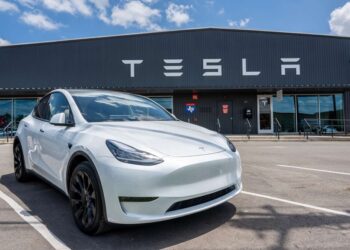The first wireless charging road for electric vehicles in Trondheim, Norway, has been installed, allowing electric vehicles to charge while in motion. The EV charging road was installed by Electreon Wireless, an Israeli hi-tech company. The company announced to the Tel Aviv Stock Exchange on Sunday.
The 100-meter road segment, featuring copper coils beneath the surface, will be tested for a year.
Three electric buses from Chinese manufacturer Yutong and one from Higer will be used to test the system’s capability as a sole energy source, aiming to eliminate charging stops and reduce carbon emissions.
The system will also be tested under Trondheim’s severe winter conditions to assess its resilience.
The project, funded by the Norwegian government, is estimated to cost up to 22.4 million Norwegian kroner (2.12 million US dollars).
How Wireless Charging Road Work
With the rapid advancement in technology, wireless charging roads are emerging as a promising innovation. These roads are designed to charge electric vehicles (EVs) as they drive, eliminating the need for frequent stops to recharge. Understanding how these roads work and their potential benefits is crucial for anyone interested in the future of transportation.
Wireless charging roads utilize embedded coils beneath the surface that create an electromagnetic field. When an EV passes over these coils, the car’s receiver coil converts the electromagnetic field into electricity, charging the vehicle’s battery. This process is known as inductive charging and is similar to the technology used in wireless phone chargers but on a much larger scale.
Benefits of Wireless Charging Roads
One of the primary benefits of wireless charging roads is the convenience they offer. Drivers can charge their vehicles on the go, reducing downtime and increasing the overall efficiency of EVs. Additionally, these roads can help alleviate range anxiety, a common concern among EV owners worried about running out of battery power far from a charging station. Furthermore, wireless charging roads can contribute to reduced greenhouse gas emissions by promoting the use of electric vehicles over traditional combustion engines.
Challenges and Future Prospects
While the concept of wireless charging roads is promising, there are several challenges to overcome. The initial cost of infrastructure development is high, and integrating this technology into existing road networks can be complex. Moreover, ensuring consistent and efficient energy transfer requires precise alignment between the road coils and the vehicle’s receiver. However, ongoing research and pilot projects worldwide are paving the way for more widespread adoption. In the future, wireless charging roads could become a standard feature in smart cities, revolutionizing the way we think about transportation.









